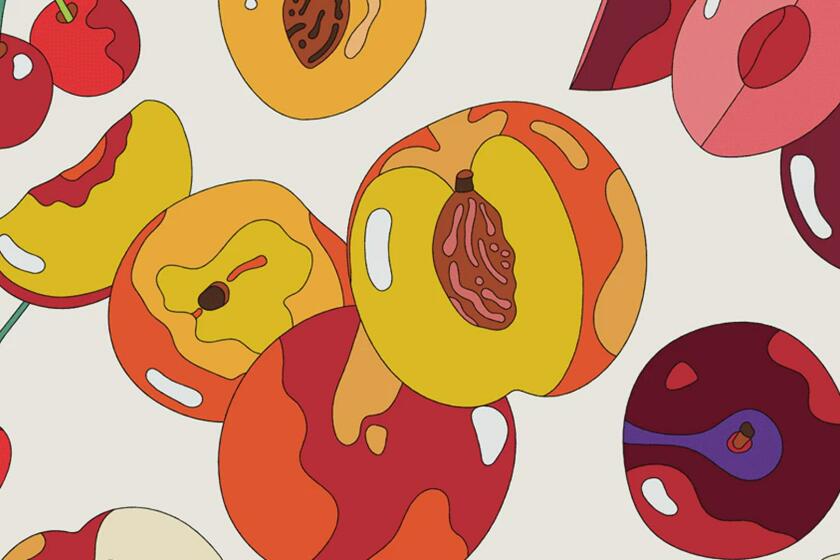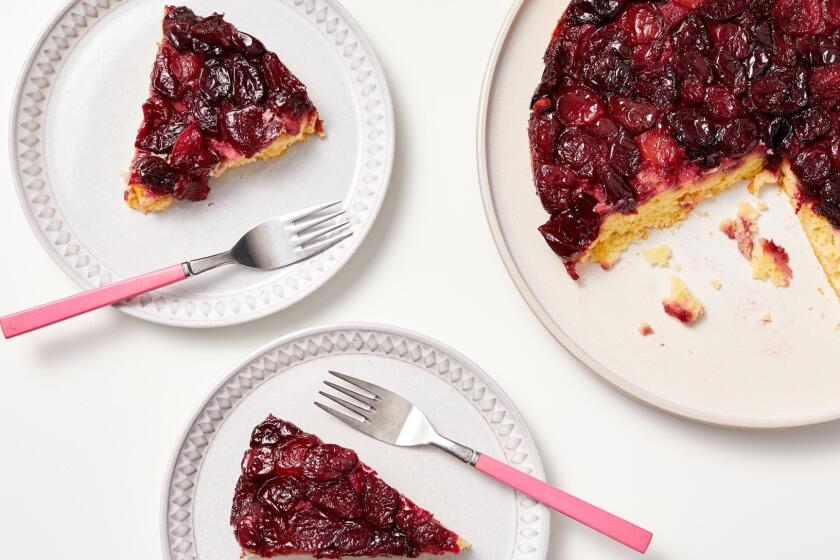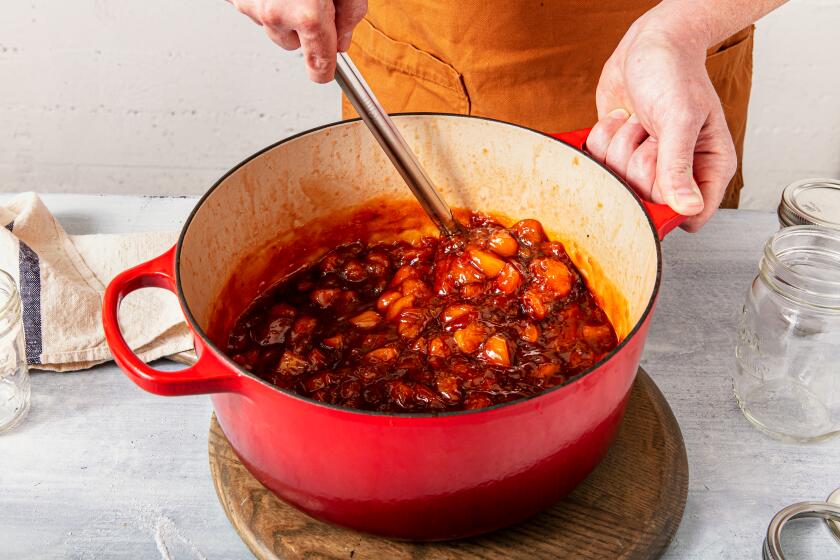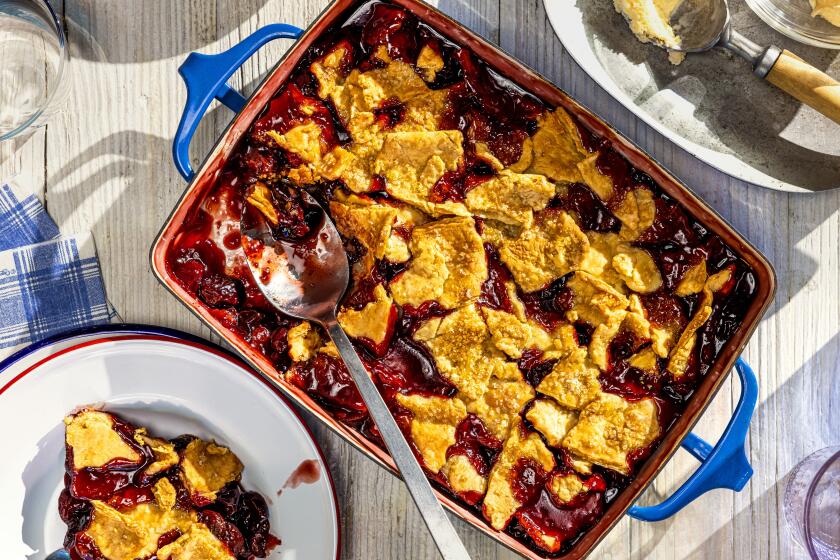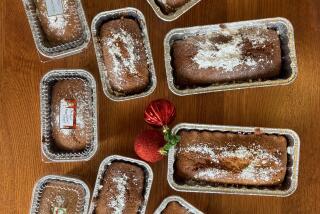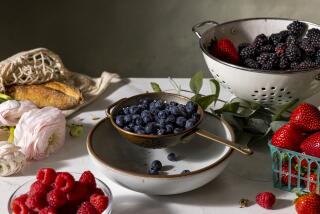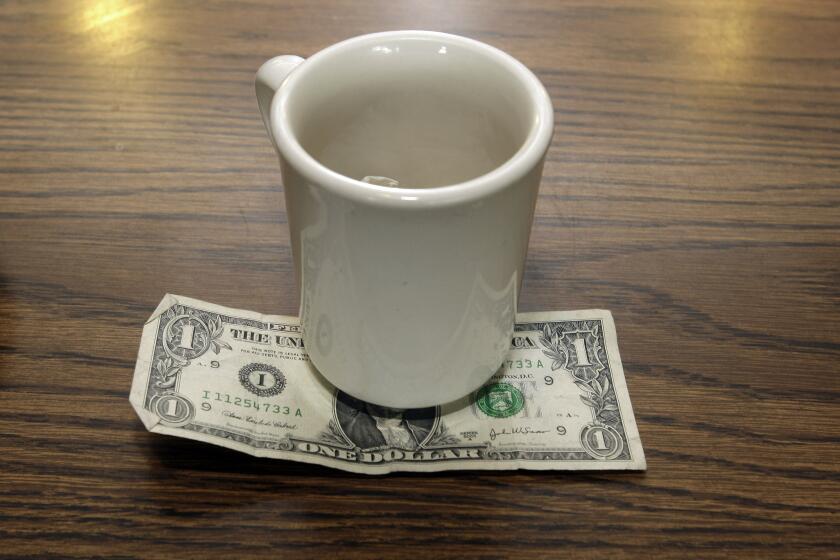Prepping cherries is the pits. Try this no-guilt alternative for whiskey-spiked cobbler
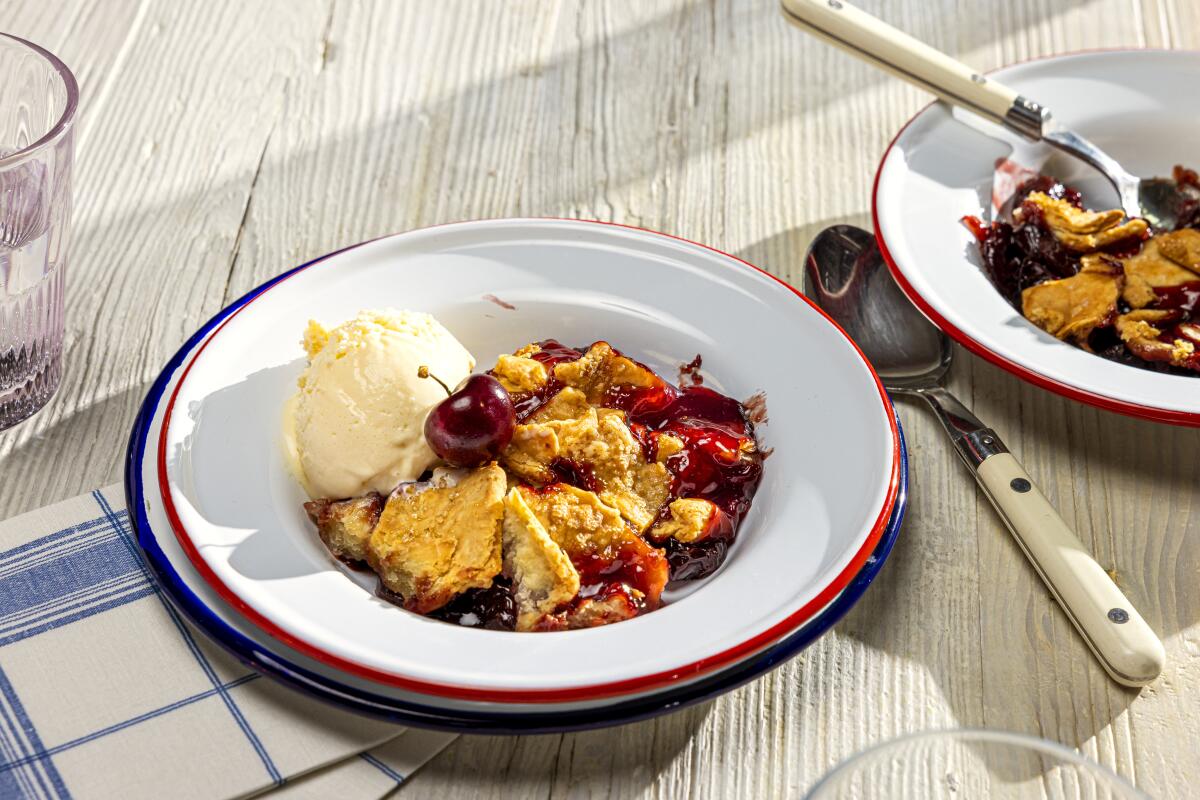
Is fresh best? Or are canned or frozen sour cherries better for whiskey sour cherry cobbler?
- Share via
Each year at this time, there’s a feverish rush to the farmers market to grab sour cherries. People stand in long lines, buy up multiple packs and brag about their haul and from which farms. I, too, have participated in this part of cherry culture in the past, but when I think about all the hubbub, it’s really only worth it to me if you’re just eating the cherries raw out of hand.
And I know what you’re thinking — “Um, hello, that’s the best way to eat them” — but I actually love the flavor of cooked cherries way more than raw. When I think about having to pit all those cherries to use in a pie, jam or clafoutis, I really stop and think, “Wait, what am I doing? Is this worth it?”
A season-by-season guide for preserving fruit in Southern California.
Oftentimes it’s not, even when using a great cherry pitter. Having to put on an apron, set up a grocery bag as a cherry-pitting station to prevent “The Staircase”-level splatters and then stand, or sit, there for an hour or more, depending on how many cherries you need to get through, doing the same repetitive motion. The process of pitting cherries can bring about many philosophical thoughts.
So, truth be told, if I’m not eating the cherries raw, I opt instead for canned or jarred cherries, which are already pitted. Before you email me in anger, think about it: Those precious sour cherries you buy at the farmers market are expensive, and once you mix them with sugar and vanilla and bake them into a pie or other dessert, any pricy nuance of flavor will be lost to the overall flavor of “cherry.”
Also, sour cherry season in California is very short — I’m talking just a couple weeks — so growers often will freeze or can them anyway so as to preserve the crop while they’re at the peak of perfection. Plus, there are very high-quality canned or jarred cherries available in grocery stores.
Cherries in pies, scones, tarts and cakes — the best way to eat them is warmed through in these early-summer treats.
If you’re looking for sour cherries, which do not actually grow that abundantly in California, buying the Oregon Specialty Fruit brand of canned cherries is my recommendation. I’ve used that brand over my career, and have even toured its factory, so I can attest to the quality. I prefer the “red tart cherries” canned whole and pitted in water, not syrup, so I can control the amount of sugar that goes into them. And if you’d rather use frozen cherries, I love Friske Orchards Montmorency cherries from upper Michigan, the part of the country where the fruit grows the best. When using frozen cherries, remember to thaw them first, then drain and weigh the cherries to make sure you get an accurate weight.
Now, how to best show off your sour cherries? I love the classics and am often married to making an iconic cherry pie. I made my best version to date for my first cookbook, “Sweet & Southern,” using cherry jam and kirsch (cherry eau de vie) to bump up the cherry flavor even more. The only downside to getting a picture-perfect slice of cherry pie, however, is using a lot of cornstarch to help thicken the juices so they don’t run out of the crust when you cut into it. I honestly don’t mind a thicker pie filling, but I know many people have hang-ups about cornstarch and any noticeable trace of it. So I offer up a cherry cobbler, which allows the baking dish to give structure to the cherries instead.
How to make jam out of peaches, plums, apricots or nectarines to capture the best fruit of summer.
When I hear cobbler, my mind goes to the cobblers of my childhood in Mississippi: bubbling fruit baked underneath a layer of craggy pie crust strips, not biscuits. It gives you “pie” without the work. It also allows the perfect balance of soft poached pastry pieces to crunchy browned pieces. And because the fruit sits beneath the crust and gets spooned out into a bowl in a rustic manner, there’s no need for anything more than a couple spoonfuls of cornstarch to give a perfectly glossy, lip-smacking texture to the cherries’ juices.
But this isn’t just any cherry cobbler. I like to spike mine with whiskey and plenty of lemon zest and juice to mimic the flavor of a whiskey sour, which has a maraschino cherry as its garnish. The whiskey pairs well with cherries — and any stone fruit, really — and the lemon brings a pleasant tartness that amplifies that of the sour cherries. I even use turbinado sugar, in all its lightly caramelly glory, since that sugar is often the sweetener of choice to be muddled into such cocktails. As a final flavoring touch, I like to add dashes of cherry bitters to the filling for another hit of cherry flavor, but this one is bitterer to balance all the sweet-sourness going on underneath.
Once the filling is ready, you have two ways to go about covering it with the pastry. Some restaurants in the South cover the fruit in a single sheet of pastry crust, like a potpie, and cut a few slits in the top so it can vent. This is perfectly fine, but I really prize chunkier bits of crust in my cobbler, so years ago I came up with an alternative method to maximize that.
When making pies throughout the year, I always save the trimmings from my pie crusts and place them in a plastic bag in the freezer. Once I’ve amassed about a pound of scraps, I know I can make a cobbler. I simply snap the frozen strips with my fingers into bite-size chunks and scatter them over the filling so they resemble cobblestones — a more authentic tribute to the dessert’s name, I like to think. Now, obviously, this approach dictates you having a supply of frozen scraps at the ready (something I highly recommend if you make lots of pies).
Fortunately and alternatively, you can make pastry crust, simply cut it into strips and freeze them until solid and use them right away. This way is much quicker, if not as novel, but sometimes speediness wins out. Once the pastry tiles cover the fruit, I sprinkle a big handful of turbinado sugar on top to add more crunch and a sprinkling of flaky sea salt because why not? After an hour and some change in the oven, the cobbler comes out with a 50-50 split between bubbling cherries and crusty buttery pastry.
It’s the best thing to make with cherries to get your fix with no pains of pitting in memory. And that makes the whole affair that much more sweet than sour.
Get the recipe:
Whiskey Sour Cherry Cobbler
More to Read
Eat your way across L.A.
Get our weekly Tasting Notes newsletter for reviews, news and more.
You may occasionally receive promotional content from the Los Angeles Times.
